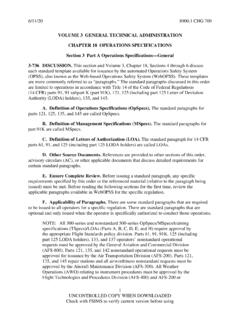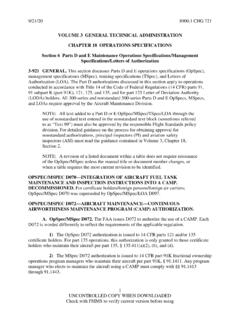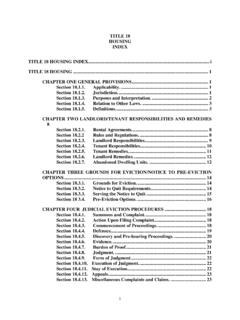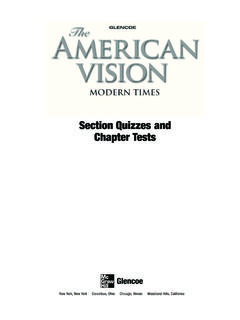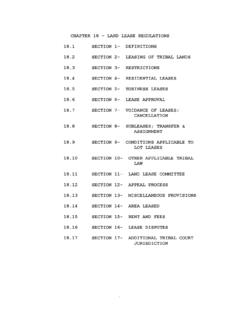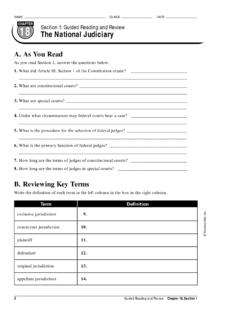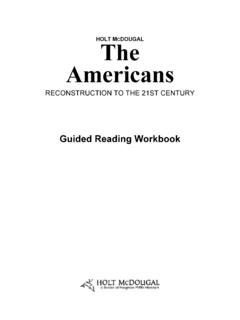Transcription of Chapter 18: The Progressive Reform Era (1890 1920)
1 Name: _____ Period_____ Page#_____ Chapter 18: The Progressive Reform Era (1890 1920) section 1: The Origins of Progressivism What were the key goals of Progressives? How did the ideas of Progressive writers help to inspire new Reform movements? What Reform organizations and what women reformers took up Progressive causes? Why did Progressive reforms meet with resistance? I. The Progressive Era A. Rapid industrialization, immigration, and urbanization in the late 1800s led to national growth and prosperity. B. The rapid growth also caused poverty, unemployment, deplorable working conditions and political corruption. C. Many Progressives believed that political action and Reform , not private charities, were the methods to bring about progress in society. D. Historians call the period from about 1890 1920 the Progressive Era. II. The Progressives: Their Goals and Beliefs III.
2 Igniting Reform : Writers and Their New Ideas A. The ideas of many writers and journalists influenced public opinion about how to Reform society. B. Journalists investigated and publicized conditions in certain industries, slums, tenement houses, and sweat shops. C. Theodore Roosevelt called the journalists muckrakers. D. Upton Sinclair, Lincoln Steffens, and Ida Tarbell were respected writers and muckrakers. IV. Progressive Reform Organizations section 2: Progressive Legislation How did Progressives wish to expand the role of government? What municipal and state reforms did Progressives achieve? What reforms did Theodore Roosevelt champion as President? I. An Expanded Role for Government A. Progressives sought more social welfare programs to help ensure a minimum standard of living. B. Many of the earliest Progressive reforms were made at the municipal, or city, level.
3 C. Some municipal reformers worked for home rule, a system that gives cities a limited degree of self-rule. D. Municipal reformers opposed the influence of political bosses. E. Reformers made efforts to take over city utilities such as water, gas, and electricity. F. Some Reform mayors led movements for city-supported welfare services such as public baths, parks, work-relief programs, playgrounds, kindergartens, and lodging houses for the homeless. II. Progressive Political Reforms III. Progressive Era Legislation section 3: Progressivism Under Taft and Wilson What political conflicts marked the presidency of William Howard Taft? Who were the contenders in the election of 1912 and what was the outcome? What major policies did President Woodrow Wilson help put in place? In what ways were the achievements of progressivism limited? I.
4 Taft s Presidency A. Taft was endorsed by Roosevelt and pledged to carry on the Progressive program. B. However, he did not even appoint any Progressives to his Cabinet. C. He campaigned on a platform to lower tariffs, but ended up signing a bill that added some highly protective tariff increases. D. Taft also angered conservationists on the issue of public land management. Taft chose Richard A. Ballinger for Secretary of the Interior. E. Ballinger opposed conservation of public lands. Instead, he sided with business interests who sought unrestricted development of public lands. F. Taft angered many people and his presidency suffered. II. Turmoil in the Republican Party A. Angry Republican Progressives teamed up with Democrats against the opponents of Reform in the Republican Party. B. Roosevelt criticized Taft and campaigned for Progressive candidates in the 1910 midterm elections.
5 C. Roosevelt called for business regulation, welfare laws, workplace protection for women and children, income and inheritance taxes and voting Reform . He called this plan: the New Nationalism. D. Progressive Republicans left the Republican Party and formed the Progressive Party, nicknamed the Bull Moose Party. E. The Bull Moose platform included tariff reduction, woman s suffrage, more regulation of business, a child labor ban, an eight-hour workday, and direct election of senators. III. The Election of 1912 IV. Wilson s Policies as President A. Wilson s first major victory was tariff reduction. B. He attacked the trusts by helping Congress pass the Clayton Antitrust Act in 1914. This act strengthened the Sherman Antitrust Act of 1890. C. Wilson and Congress created the Federal Trade Commission to enforce the Clayton Antitrust Act. D. In 1913 Congress passed the Federal Reserve Act and created the Federal Reserve System to overhaul the American banking system.
6 E. In 1916 Wilson tried to attract Progressive voters. To this aim he nominated Progressive lawyer Louis D. Brandeis to the Supreme Court. F. In 1916 Wilson won a second term. V. The Limits of Progressivism A. The changes made by Progressives were limited to certain groups in the United States. B. Progressives championed municipal reforms, but did little for tenant or migrant farmers. C. Progressive Presidents took little action to pursue social justice reforms. D. Wilson continued the Jim Crow practice, begun under Taft, of separating the races in federal offices. E. At the 1912 Progressive Party convention, Roosevelt declined to seat black delegates from the South for fear of alienating white Southern Progressives. F. By 1916, the Reform spirit had nearly died. It was replaced by American concerns about World War I. section 4: Suffrage at Last In what ways were Susan B.
7 Anthony and Elizabeth Cady Stanton a bridge to the twentieth-century suffrage effort? What two main strategies did suffrage leaders pursue? What was the status of the suffrage movement by the turn of the century? Why was a new generation of national leaders needed in the suffrage effort? What factors led to a final victory for suffrage? I. Preparing the Way for Suffrage A. American women activists first demanded the right to vote in 1848 at the Seneca Falls Convention in New York. B. The movement eventually split into two groups: 1. The National Woman Suffrage Association fought for a constitutional amendment for suffrage. 2. The American Woman Suffrage Association worked to win voting rights on the state level. C. In 1890, Wyoming entered the union and became the first state to grant women the right to vote. D. In 1872, in an act of civil disobedience, a suffrage leader, Susan B.
8 Anthony, insisted on voting in Rochester, New York. She was arrested for this act. II. Suffragist Strategies A. Constitutional Amendment 1. Winning suffrage by a constitutional amendment 2. The first federal amendment was introduced in Congress in 1868 and stalled. 3. In 1878, suffragists introduced a new amendment. 4. Stalled again, the bill was not debated again until 1887. It was defeated by the Senate. 5. The bill was not debated again until 1913. B. Individual State Suffrage 1. Winning suffrage state by state 2. State suffrage seemed more successful than a constitutional amendment. 3. Survival on the frontier required the combined efforts of men and women and encouraged a greater sense of equality. 4. Western states were more likely to allow women the right to vote. III. A New Generation A. Susan B. Anthony and Elizabeth Cady Stanton, leaders of the suffrage movement, died without seeing the victory of women s suffrage.
9 B. At the turn of the century, Carrie Chapman Catt became the leader of the National American Woman Suffrage Association (NAWSA). She led the movement from 1900 to 1904 and again after 1915. C. In March 1913 Alice Paul and Lucy Barns organized a parade of 5,000 women in Washington, D. After the success of the rally, Paul transformed her committee into a new organization called the Congressional Union. IV. A Split in the Movement V. Victory for Suffrage E. In 1918, Congress formally proposed the suffrage amendment. F. After the amendment was proposed the ratification battle began. G. In August 1920, Tennessee became the 36th state necessary to ratify the suffrage amendment. H. The Nineteenth Amendment, granting women the right to vote, was the last major Reform of the Progressive Era. Key People, Terms, and Questions: Define the following terms and answer the questions in complete sentences.
10 section 1: The Origins of Progressivism1. Progressive Era 2. muckraker 3. injunction What were some of the historical roots of the Progressive Era? How did Henry George and Edward Bellamy influence the rise of progressivism? How did injunctions affect the growth of labor unions? Identify some Progressive women's groups and their causes. section 2: Progressive Legislation 4. social welfare program 5. municipal 6. home rule 7. direct primary 8. initiative 9. referendum 10. recall 11. holding company Summarize the Progressives' views on regulating business. Give examples of government reforms and social welfare programs at the municipal and state levels during the Progressive Era? Describe the effect of each of these reforms: (a) home rule; (b) direct primary; (c) initiative. What reforms did TR achieve under his square deal? section 3: Progressivism Under Taft and Wilson12.
